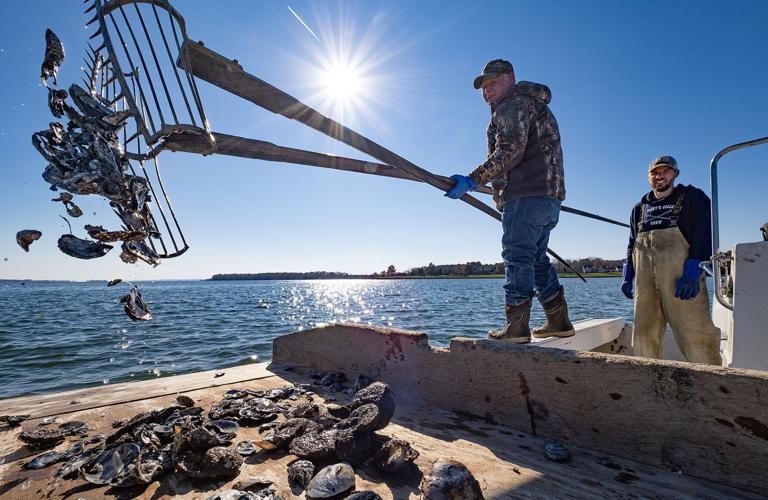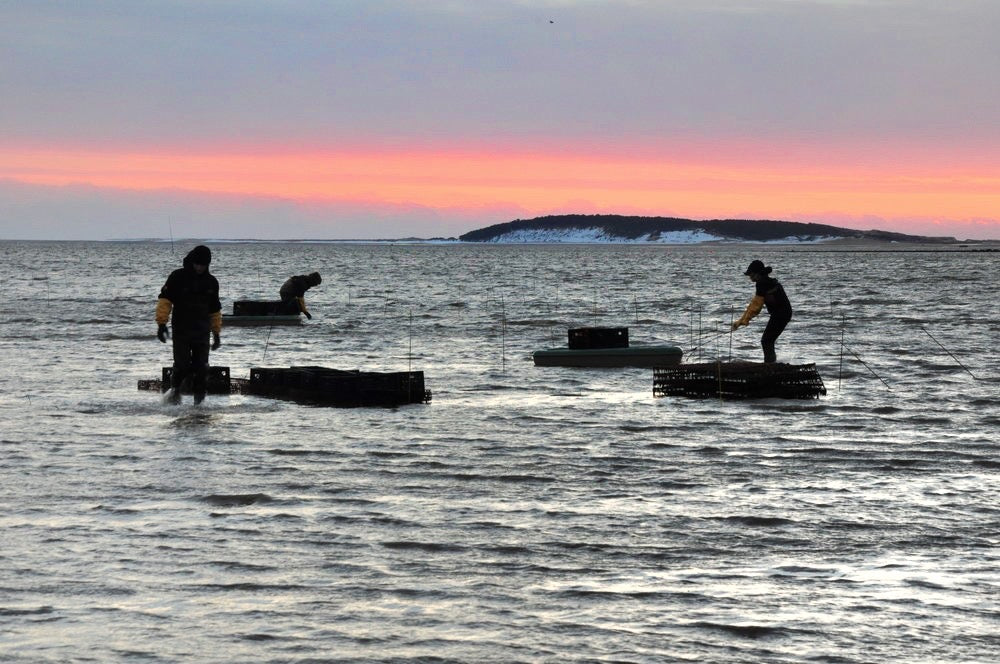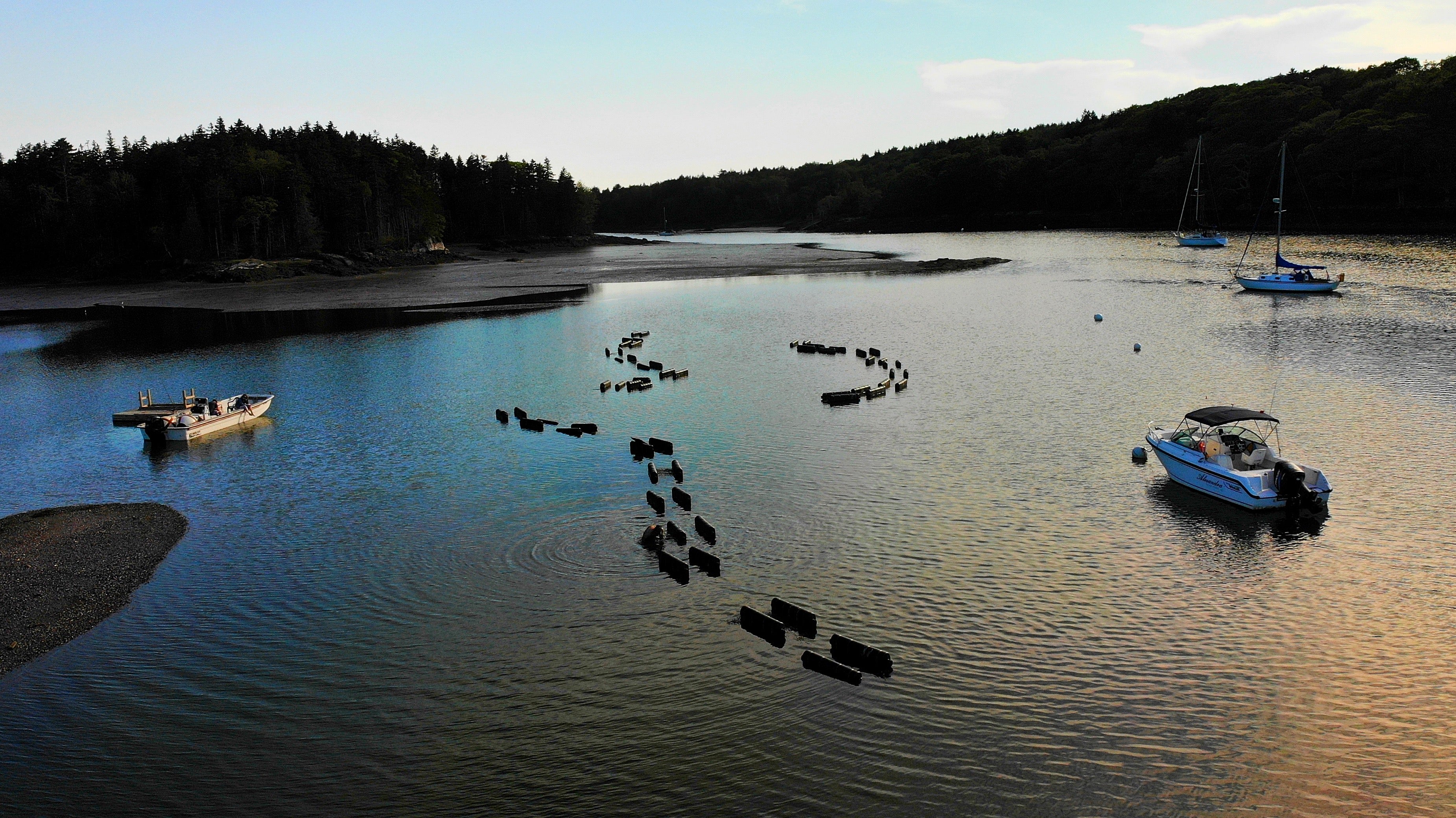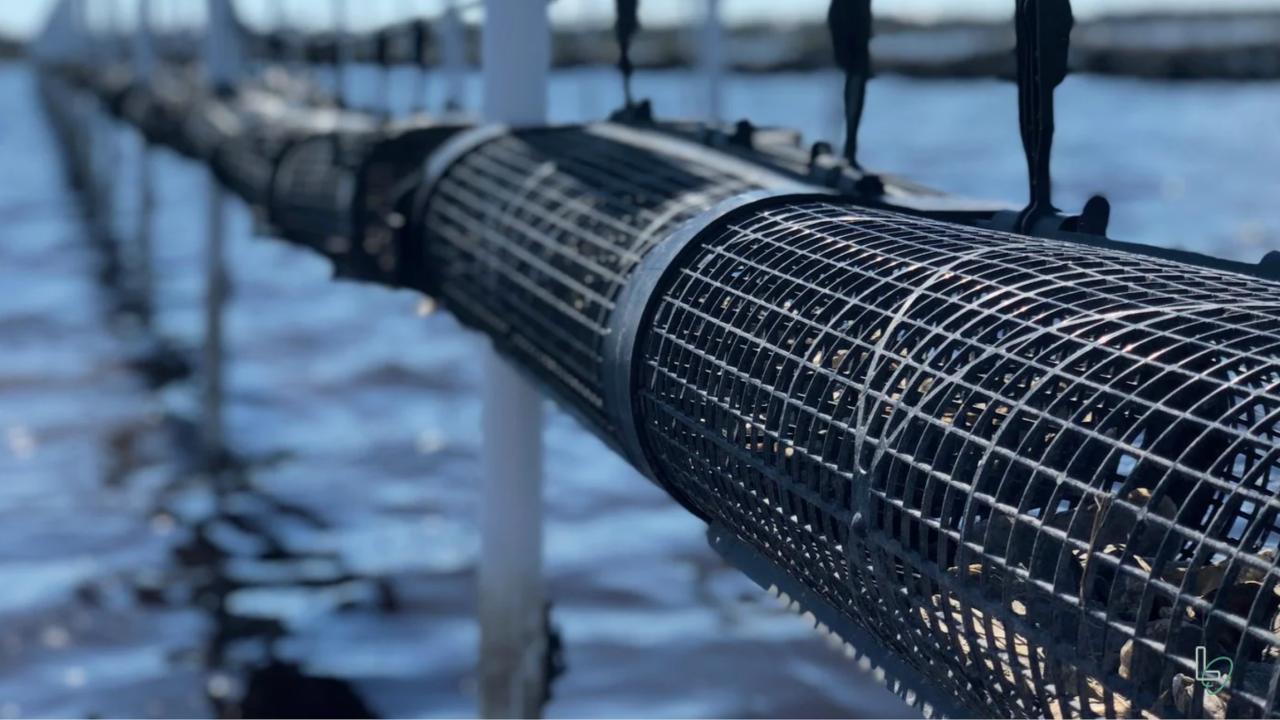FARM

Bottom Planted
Bottom planted oysters are scattered along the bottom of the sea floor of a farm lease and grow without too much human influence while they’re there. Oysters must often work harder to protect themselves from predation on the bottom of the water column, but in doing so produce strong shells and adductors. To harvest these oysters, farmers with either dive or dredge to collect them.
Photo: Dave Harp/Bay Journal
This method is when oysters are placed in mesh bags or cages that are secured on a rack just off the bottom of the ground, which protects the oysters from predation. This system works well in intertidal zones that get low enough for farmers to access the oysters at low tide.
Photo: Triskell Seafood
Using this system, oysters are suspended in deeper waters in trays that are attached to floating buoys. As the currents pass through the trays or nets, the oysters receive natural tumbling and take advantage of nutrients at various levels of the water column. Some farmers prefer this method because it has less “benthic impact” on the environment, meaning that they don’t disrupt the sea floor’s surface area as much as other methods.
Photo: Fishers Island Oysters

Cage Culture
Simply secured in a cage and resting on the sea floor, these cages are often used to protect oysters from predators and are commonly implemented to jumpstart the growth of younger oysters before tansitioning them to other farming methods.
Photo: Lady Oyster, Puffers Oysters

Floating Cages
Oysters are placed into cages or bags that have flotation devices attached, which keep oysters at the top of the water column, just beneath the water’s surface. These oysters will feed constantly and continue to receive a natural tumble from the water’s current, which helps to create deeper cups.
Photo: Lady Oyster, Maine Oyster Co.

Long Line
In this method, oysters are placed into cages and strung in one line out into the tide. This adjustable system gives the oysters a natural rock with the waves as the tides rise and retreat, and allows for lines to be raised or lowered according to seasonal tide changes.
Photo: North Sea Oyster Co.


